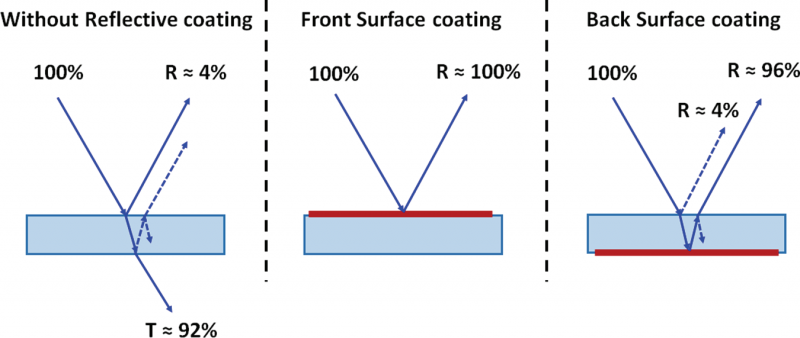What is Reflective Coatings?
A very important coating is a reflective version that produces mirrors, coated on the front or back transparent optical material or on the front surface of metallic substrates.

This kind of coating reflects a high amount of energy (light in the visible range), which is important for its intended use. As the AR coatings, reflective coatings are also designed for different regions of the spectrum. Aluminum is the most common metallic coating material. Table below shows different kinds of coating materials and the percentage of reflection in different wavelengths.
| wdt_ID | Wavelength λ (um) | Al | Ag | Au | Cu | Rh |
|---|---|---|---|---|---|---|
| 1 | 0.220 | 91.5 | 28.0 | 27.5 | 40.4 | 57.8 |
| 2 | 0.315 | 92.4 | 5.5 | 37.3 | 35.5 | 75.0 |
| 3 | 0.400 | 92.4 | 95.6 | 38.7 | 47.5 | 77.4 |
| 4 | 0.650 | 90.5 | 98.8 | 95.5 | 96.6 | 81.1 |
| 5 | 0.900 | 89.1 | 99.3 | 98.4 | 98.4 | 83.6 |
| 6 | 3.0 | 98.0 | 99.4 | 98.6 | 98.6 | 95.0 |
| 7 | 8.0 | 98.7 | 99.5 | 98.8 | 98.8 | 97.2 |
The other type of optical coating used for reflection purposes is the dielectric coating, which uses thin layers of transparent dielectric materials with different refractive indices (e.g., magnesium fluoride or calcium fluoride) and various metal oxides that are deposited onto the optical substrate.
